-
Posts
8,624 -
Joined
-
Last visited
-
Days Won
52
Content Type
Profiles
Forums
Events
Store
Downloads
Gallery
Posts posted by Jean
-
-
Here’s is an e-mail I received asking for identification :
«
I am a beginning tsuba collector. Maybe I should not be, since I am 70 years old. But only about a year ago I learned of what a tsuba was. Never heard of them before. Attached are the front or rear of my first tsuba. (The other side is blank.) I think it to be real from the patina and dirt on it.
But after cruising the internet for over a year, I have never seen another like it. I have used some on-line charts, and think it might be a kamakura-bori type. Could you help me to identify it, if you have time.«
I agree on the school, Opinions please
-
Jaron, read this topic:
-
Fantastic👍
-
 1
1
-
-
Condolences😢
-
Congrats
-
 1
1
-
-
A big thank you first to our master without whom NMB won’t exist. He is the spider in the center of the cobweb which is NMB.
A huge thanks to all the newbies with whom we share our hobby and without whom we will turn in an never ending closed circle.
A big thanks to all of you who spare us John, Brian and myself, by being courteous.👍😃
-
 2
2
-
 8
8
-
-
There is a Kaeri….
-
-
Extensive article on Tametsugu showing the Soshu influence on his work. The opposite should be surprising considering his teacher.
-
Learning to read and understanding what you read are separate things, and I know what I am talking about as I spend three hours per week teaching reading to young ones.
-
 3
3
-
-
The blade has Mitsu mine.
-
Jacques,
As you are stuck in your books and certitudes, just ask Zénon Vandame, he saw my Gokaden at the French Token meeting a few years ago and there was no problem concerning the samples I displaid as representative of the Gokaden:
-
Jacques,
Here is translation of the Juyo zufu: it is directly attributed to Tametsugu (not Den Tametsugu), rather Soshu den. You will see that Tametsugu spent quite a long time in Etchu before moving to Mino. I have no example of signed Tametsugu (Mino or Etchu), if someone can post them, I am curious to see the oshigata. I have seen quite a few blades attributed to Tametsugu, but none in Mino style.
here is a link to Sanmei, where the appraiser state that this work is typically in Soshu style.(The entire quenching effect is full of variety that comes from "Nie" extremely hard metal granule activities that are typical of Soshu works in the prime of Nanbokucho period)
http://sanmei.com/contents/media/T284983_S1521_PUP_E.html
-
 2
2
-
-
From Nakayama Kokan: connoisseurs book of Japanese swords:
you will see the definition of Gokaden. A few tables of smiths working in these traditions, it clearly shows that a smith establish in Nio province can work in Yamato tradition. It means that you don’t have to live in Yamato province to work in the Yamato tradition, the opposite being true, it is not because you live in Yamato that you have to forge in Yamato tradition (Tsutsui Kiju).
page 212 - Tametsugu is classified by Nakayama Kokan as Soshu tradition
-
Tony,
Without searching very far, the answer is in the price you paid for it and in the kanteisho level (certificate level) you got. No certificate, it must be presumed gimei. Low price, it cannot be a Rembrandt.
-
I let the members judge of your misconception of the Gokaden, compare to Fujishiro’s one.🙂
concerning Sho-Shin site, I made a screen copy of Shinto Yamato province smiths to show you that, as rookie as I am, I was slightly aware that Koto Yamato tradition carry on in Shinto 😂 you will notice that some even indulge to the time fashion (Toran Ba).
Taking into account the number of O suriage blades kanteied by NBTHK to Kanemitsu, somewhere these blades must have included typical Bizen kantei points.
Which leads to the main problem : When you are talking about tradition I am afraid you are mixing Provinces tradition and schools, otherwise how can someone speak of Bizen tradition when there are so different schools, same for Yamato with its 5 schools, Yamashiro …. and I don’t even dare to speak of Mino with Kinju and the Seki schools and Kaneuji schools…I will end here the controverse.
-
 1
1
-
-
« As for the "gokaden" we can only talk about them for the first generations »
« To believe that there can be no continuity in certain schools is a mark of ignorance »
The problem, Jacques, is that you have a total misconception of the Gokaden. Marius Sesko in its encyclopedia has a very good article on Gokaden (pg 77). To begin with Gokaden means 5 traditions. You cannot talk of tradition with one individual, it is ridiculous.in order for you to understand what means Gokaden, you will find attached a copy of what wrote Markus.
Concerning Yamato, the discussion was about signed Yamato swords. During Kamakura and Nambokucho, the temples had their own forges, swords were manufactured for the community (warrior monks) so there were no necessity to sign them. Reason why the signed Yamato blades are scarce.
two facts:
Shinto Yamato schools are not all following Koto Yamato schools (it is an understatement) meaning Yamato den.Shinto swords whatever the provinces are signed at 99%, reason why it has no signification to compare the number of Koto Yamato blades signed and Shinto ones.
http://www.sho-shin.com/shinto-yamato.html
-
 1
1
-
-
Jacques,
Well tried but irrelevant. We are talking about Koto and Gokkaden. In Shinto exit the Gokkaden. In Shinto, blades were signed, warrior monks had disappeared.
BTW, yes Darcy was right, this was confirm by Jussi.
-
The question is not is it worth 2000$ for you guys, but is it worth 2000$ for your eyes.
You are the only one who can decide. Nobody can take the decision for you.
-
 1
1
-
 1
1
-
-
As long as they are listed under Shinto, there is no problem. For obvious reason, Yamato Shinto and Koto cannot be mixed.
-
Sorry, but you are totally wrong Jimmy.
Read what was writing Darcy Brockbank about Yamato swords:
Quote:
« I do have everything digital now and have been working on a project with about
5,000 hours in now. Markus has access to my project as he's been doing some
contributions. So when stuff is fact it's very easy for both of us to confirm this.
Studying the Juyo blades is just studying the best published discoveries of the last 60
years. Looking at them all is like having the eagle's perspective when everyone
else is thrashing around in the mud.
Ultimately being able to check them is what verifies a blade like your tanto is
so rare and precious. Any signed Yamato work of Nanbokucho and earlier has to be
held as particularly important as there are 318 that I've counted. This is
including quasi-Yamato stuff like Mihara and Mino Senjuin etc. Also including
things like Muromachi Yamato which is more commonly signed and not as important.
I think with the five core schools the number is around 130 or 140. So when you
have one you have something rare just on that basis.
Anyone can find a nice blade. There are a lot of nice blades out there.
Anyone can get a nice mumei Taema or mumei Yamato Shizu. There are many. But
some blades are the items that we need in order to piece together the bigger
picture. That's where things like this come in and those are the ones I try to
get for my website when possible.
Looking at the bigger picture and studying all the Juyo and Tokuju side by side
further hammers home the point that there are Juyo blades and then there are a
small sliver of these that stand apart for some reason. Because the average
Western collector (and even Japanese collector) doesn't have this perspective
they easily get lost in relativism, thinking that any two blades are equivalent
because they have the same paper or so on.
When you look at the numbers, there are more mumei Nagamitsu than there are
signed Yamato blades from the 5 schools, Nanbokucho and earlier. Though
Nagamitsu is held in high regard there is no way of knowing who made a Nagamitsu
(they are all talented students but the point is that Nagamitsu is basically a
brand name and the average westerner cannot tell the difference between the
master's work and one of the students). we have the same problem with Rai
Kunitoshi in that the NBTHK doesn't differentiate the various daimei works. If
someone studies and takes the time as I've done then the six signatures stand
out clearly. So we need to draw some conclusions from that. True master's work
should be elevated a bit among the daimei. But it's up to you to know what
you're looking at and why one Rai Kunitoshi may be more expensive than the other
(or why it may be a good deal). Again with the two Kunitoshi you have about
double the number of works in total as there are signed Yamato blades of
Nanbokucho and earlier.
I'm no huge fan of Yamato work on my own but there are standout blades and I
think when one is signed it doesn't need anyone to stand up and have to write a
lot about why it's special, it just is special on its own.»
-
 4
4
-
-
I also checked in the « Japanese sword smiths » book (by Markus Sesko) and agree with Jussi.
concerning sue Bizen mei, here is an opinion written by Darcy:
Quote:
Gimei or not?: post #27 Darcy
The first smith that seems to have done this is Kunimune but it was not a habit. He has some examples that read "Kunimune Bizen Kuni Ju Osafune". All of the Juyo blades though are Nijimei with the exception of the Nakahara Kunimune blades.
Sukemitsu in Bun'an (1444) is not recorded by Fujishiro as signing "Bizen Kuni Ju Osafune" but only using the Bishu style signature.
The first smiths doing this by habit seems to have been Munemitsu (Bunmei, 1469) and Katsumitsu (Bunmei) and then Hikobeinojo Sukesada (Entoku). So it appears to have been something which comes up between these generations (Sukemitsu to Munemitsu/Katsumitsu).
Fujishiro remarks on the habit as Osafune being used as a family name under the Kiyomitsu entry. He comments also under Munemitsu that "Osafune is the name of a place, but considered from the point that Osafune is inscribed after Bizen Kuni Ju, this means that Osafune is used like a surname. This example also appears in others of late Bizen" (i.e. Sue Bizen).
The latest entry in the koto period which follows this pattern is for Yukikane and Harumitsu (Tensho). Harumitsu also signed unusually with Bishu Ju Osafune and Bushi Zen no Kuni Ju Osafune. He seems to have not always used the Osafune though.
Hichibei Sukesada in the Shinto period (late 1600s) also used "Bizen Kuni Ju Osafune". The rest of his line seems to have continued to do this as there are entries in Kawachi no Kami Sukesada in 1688, and Godai Sukesada (Hichibei) 1751.
Yokoyama Sukekane in the Shinshinto period is back to signing "Bizen Osafune Ju" (Keio, 1865) as does Sukenao (1854), Sukenaga (1830), and others I assume.
My conclusion (which can also be picked up from several other books) is:
1. from Bunmei on, Osafune works in the Koto period, the rule of thumb is that Ju precedes Osafune.
2. if the order is not reversed, then the blade is most likely gimei
3. no general rule in swords is absolutely certain -- if only for the fact that we have certainly lost works so potential dissenting examples that break the rules have possibly been lost AND Japanese habit is to eliminate examples that break the rules. This further distorts the rule in that dissenting examples may seem to be more in the minority than they may have been at some point in the past, which means that conclusion #3 here needs to be respected (bearing in mind that it's a general rule itself!).
4. the reverse ordering clearly needs to be kept in mind in the Shinto period as well for Osafune smiths though it is not clear how tightly they kept to the habit without doing a full study of smiths more obscure than appear in Fujishiro. "
Unquote
-
Don’t miss it guys, I went three times to DTI, each time the Yakatabune was the apex of DTI.
-
 2
2
-
-
Just a tip, Steve, have a look at the yasurime (file marks on the nakago)
-
 1
1
-



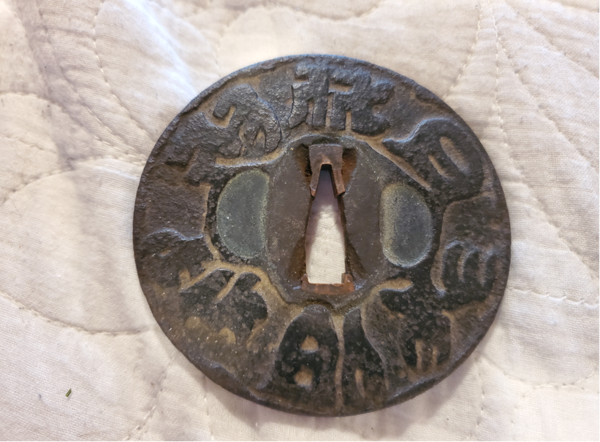
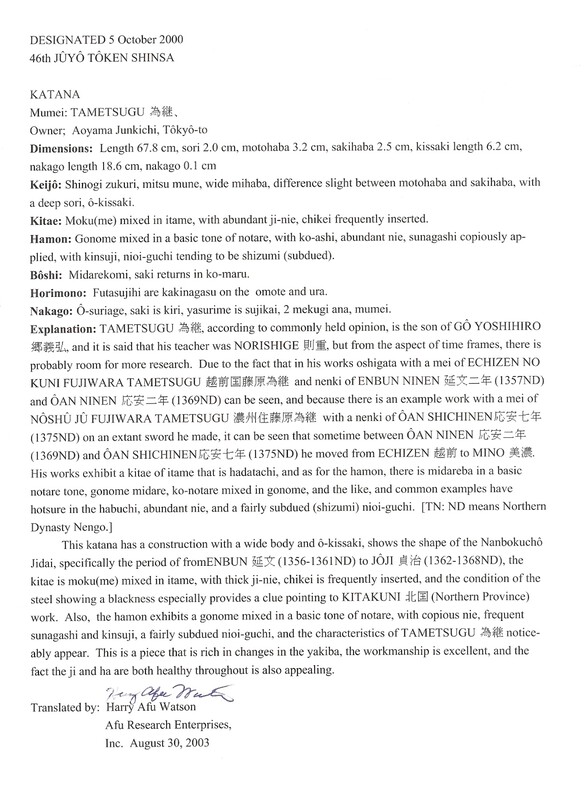
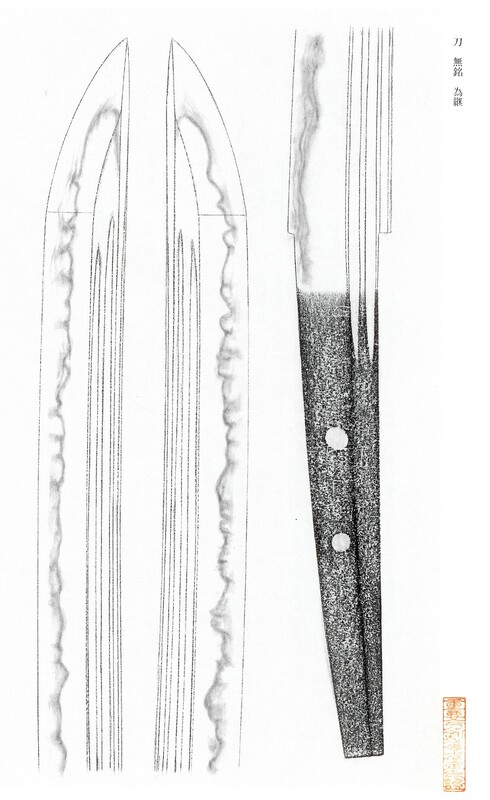
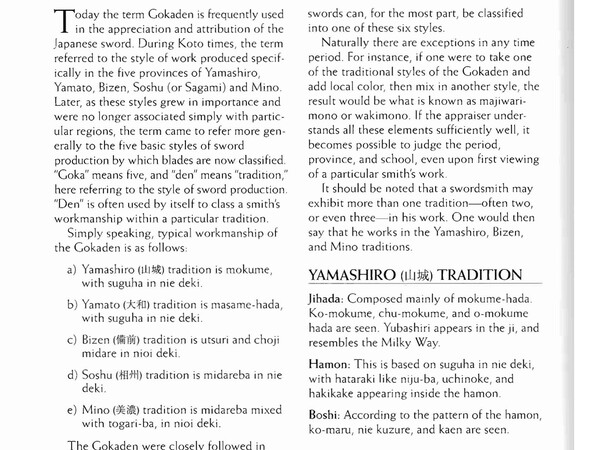

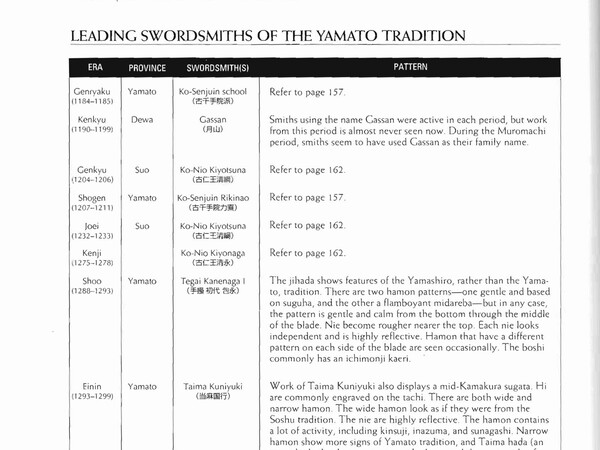
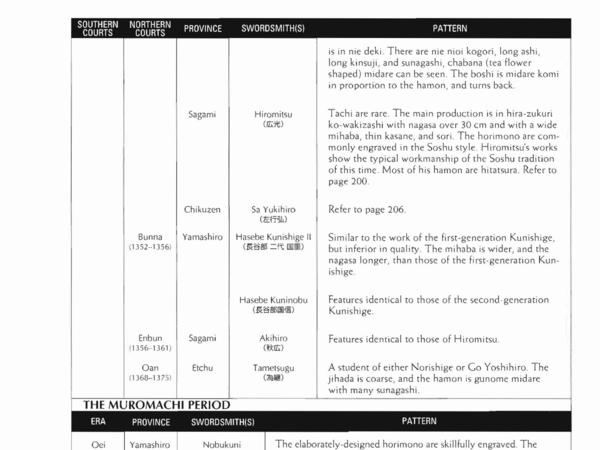
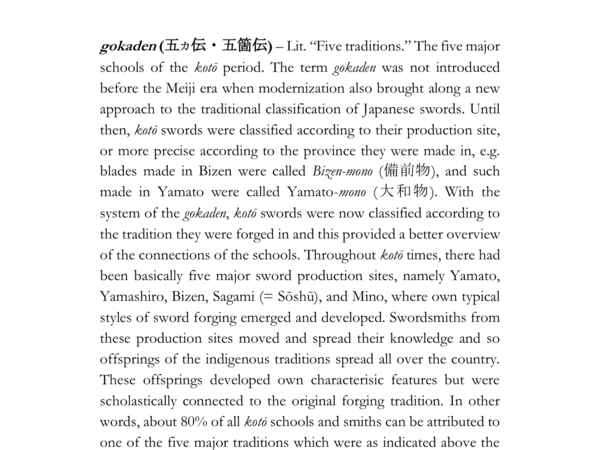
School
in Tosogu
Posted
Dale,
Many thanks, I have already inquired about the ura side but with no success, he did not send me the requested picture. I’ll try again in a minute😃